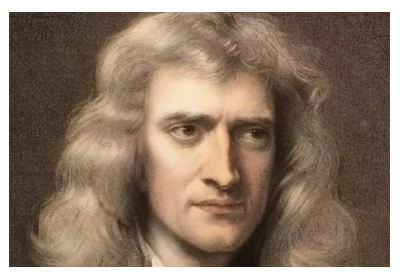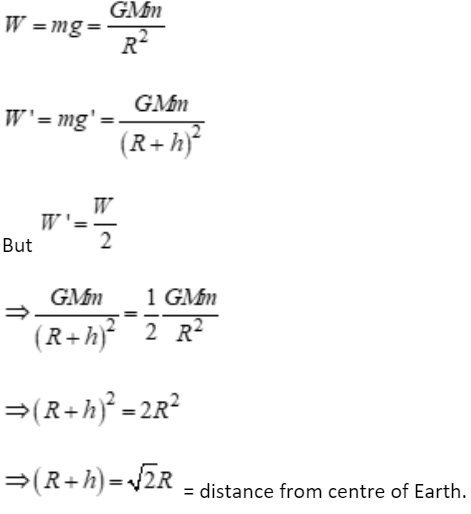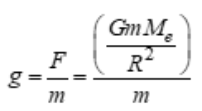Table of Contents
What laws govern motions of planets around Sun, or motions of Moon and artificial satellites of Earth around the Earth, or of satellites of other planets around those planets? What governs the motion of solar system around the Milky way?
A great deal of painstaking and meticulous observations done by Kepler and some others who came before Sir Isaac Newton on planets orbiting the Sun, helped Newton formulate his now widely popular and accepted universal theory of gravitation. In 1687, Newton put forth the theory using which even today more than 95% of motions of heavenly bodies are explainable, even on intergalactic scales.

Universal law of gravitation
Newton stated that every particle of matter attracts every other particle with a force (called gravitational force) that is directly proportional to the product of the masses and is inversely proportional to the square of the distance between them.
If there are two particles with masses m1 and m2 and r is the distance between them, then, force of gravitation between them, F, is such that
F ∝ m1 and m2
F ∝ 1/r2
⟹ F ∝ m1 and m2/r2
⟹ F = Gm1 and m2/r2
where G is a constant for all bodies (universal constant). It is called universal gravitational constant.
The value of G was first found to be G= 6.67×10-11 Nm2kg-2 by Henry Cavendish.
Properties/applicability of the law of gravitation
- The law can be applied even for extended bodies considering them as point objects (mass concentrated at their centre of mass), provided the dimensions of bodies are negligible compared to the distance between them.
- The force of gravitation is always attractive in nature, unlike electrostatic force which can be attractive or repulsive.
- Presence of an intervening medium between the masses does not affect the force of gravitation between them.
- Gravitational force is a long range force. It is applicable between two nucleons inside a nucleus to between two galaxies separated by millions and billions of light years.
- The value of universal gravitational constant is very small. Hence we do not see two persons getting crashed into each other in day-to-day life.
- The structure of solar system and large scale structure of universe is primarily governed by gravitational force.
- Gravitational force is a fundamental force and it is weakest among the four fundamental forces of nature, viz. gravitational force, weak nuclear force, electromagnetic force, strong nuclear force.
Can we use Newton’s law of gravitation to find the force of attraction between two nearby tall buildings, by considering them as point objects?
Solution:
No. Dimensions of tall buildings are not negligible compared to distance between them.
Whereas we can consider Earth and Sun as point objects because dimensions of both Sun and Earth are negligible compared to the distance between them.
Problem 2
When electrostatic force is about 1041 times stronger than gravitational force, why do we say that motion of Earth around the Sun is governed by gravitational force?
Solution:
Electrostatic force is indeed immensely powerful than gravitational force. But Sun and Earth are independently close to being electrically neutral. Hence electrostatic force between them is almost zero. So, it is predominantly gravity that governs the motion of Earth around the Sun.
Problem 3
What is the gravitational force between an electron and a proton in a hydrogen atom? (me =9.1×10-31kg, mp ≈ 180 me, distance between them, r = 0.53×10-10m)
Solution:

F =3.5×10-46N.
This is very small compared to the force of electrostatic attraction between the electron and proton. Hence inside atoms, motion of electrons are governed by electrostatic forces. But as a bulk material, motions of Sun, Earth, solar systems, galaxies are governed by force of gravitation.
Principle of superposition
When several point particles are present, then net gravitational force on a particular particle is found by finding vector sum of individual gravitational forces due to all other particles on the given particle.
![]()
Where, ![]() net force on particle 1,
net force on particle 1, ![]() respectively represent force on particle 1 due to particle 2, due to particle 3, due to particle 4 etc…
respectively represent force on particle 1 due to particle 2, due to particle 3, due to particle 4 etc…
Weight and gravitational force are one and the same!
When we say weight of a body, by that we mean the force of gravitation with which that body is attracted by the Earth towards its centre. Unit of weight is newton.
W = F = GMem/r2 where r is the distance of the body from the centre of the Earth.
Problem 4
At what distance from the centre of the Earth of radius R, will the weight of a body become one-half that on the surface of the Earth?
Solution:

What is meant by acceleration due to gravity?
Gravitational force on an object due to Earth at a point depends on the mass of the object. We define a physical quantity at every point that becomes independent of the mass of the object but depends only only the mass and dimensions of Earth. We define
Acceleration due to gravity, g = Gravitational force/mass of object

where Me= mass of earth, R= radius of Earth, m= mass of object.
g = GMe/R2, g is called acceleration due to gravity.
Unit of acceleration due to gravity is ms-2 or Nkg-1
Acceleration due to gravity
- Is a property of a point
- Is definable at each point around the Earth up to infinity. It is definable inside the Earth, on its surface and also outside the Earth
- Earth creates a g-field around itself. Every body creates its own g-field at all points of space.
- Is independent of the mass of the object on which gravitational force due to Earth is measured
- Depends on the mass of Earth and distance of the point from the centre of the Earth.
- To measure g at a place, we can measure gravitational force F acting on a mass m (g = F/m)
- The value of g changes with
- Latitude of the point on the surface of the Earth
- Height of the point above the Earth
- Depth of the point inside the Earth
- The value of g decreases from equator to poles.
- Weight of an object is W = mg, where g is acceleration due to gravity at that place.
For Earth, 
FAQ’s on Universal Law of Gravitation
State Newton’s universal law of gravitation?
Every particle of matter attracts every other particle with a force (called gravitational force) that is directly proportional to the product of the masses and is inversely proportional to the square of the distance between them.
Is Moon falling towards the Earth?
A. Since Earth is pulling the Moon constantly, so obviously Moon is falling towards the Earth. But what prevents Moon from crashing onto Earth is its orbital speed. For simplicity, let us take motion of Moon to be circular around the Earth. Orbital velocity of Moon (v) and gravitational force on Moon (F) act perpendicular to each other. In such a situation, only direction of velocity is turned. This alters direction of motion by some angle. But simultaneously the direction of gravitational force also tuns by the same angle such that (v) and (F) always maintain perpendicular directions. This is why crashing is prevented. If Moon were to be made stationary, then it would come crashing onto the Earth due to the Earth When you whirl a stone tied at the end of a string, you pull the stone (via the string) but stone does not crash on to you. The reason is same as given for Earth-Moon system.
Is motion of electron around the nucleus of a hydrogen atom governed by gravitational force?
No. Electrostatic force of attraction between electron and proton is many orders of magnitude stronger than gravitational force between them. So it is electrostatic force governing the motion of electron inside an atom.
Do asteroids obey Newton’s universal law of gravitation?
Definitely. Any grain of sand, or even a molecule obeys Newton’s law of gravitation.
What does the value of acceleration due to gravity of Earth depend on?
Its value depends on latitude, height and depth.
Are mass and weight same?
No. Mass is the quantity of matter contained in a body. Weight is the gravitational force with which an object is attracted by Earth. Unit of mass is kilogram, unit of weight is newton.



